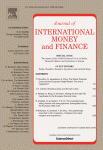Enhanced Debt Management: Solving the eurozone crisis by linking debt management with fiscal and monetary policy
Abstract
Unconventional approaches to suit unusual circumstances have become acceptable in monetary policy, a formerly highly conservative discipline. In this paper it is argued that unconventional approaches should also be considered in sovereign debt management, in order to contribute to resolving the eurozone sovereign debt crisis. First, the Troika crisis lending to indebted sovereign borrowers in the eurozone is reviewed and compared with standard IMF post-crisis lending. The main difference and shortcoming is the unsustainable character of the eurozone approach, due to the omission of demand stimulation components. To address this and other shortcomings, the features of an ideal alternative funding tool are identified. It would solve the funding problems of affected sovereigns, help stabilise the banking system, but most of all stimulate domestic demand and hence end the vicious downward spiral. It is found that this funding method can be implemented as part of enhanced public debt management by each nation’s debt management office.
Keywords
Bank credit; Credit creation; Enhanced Debt Management; Public debt management; Quantitative Easing; Quantity Theory of Credit

